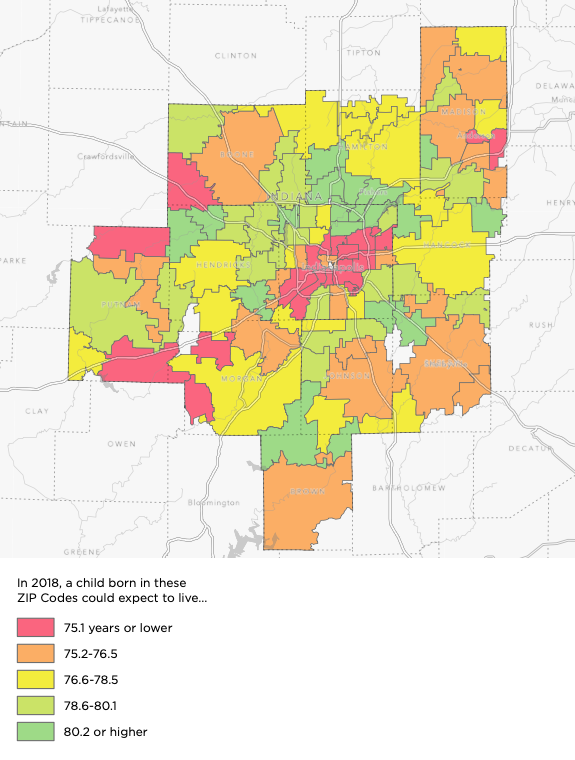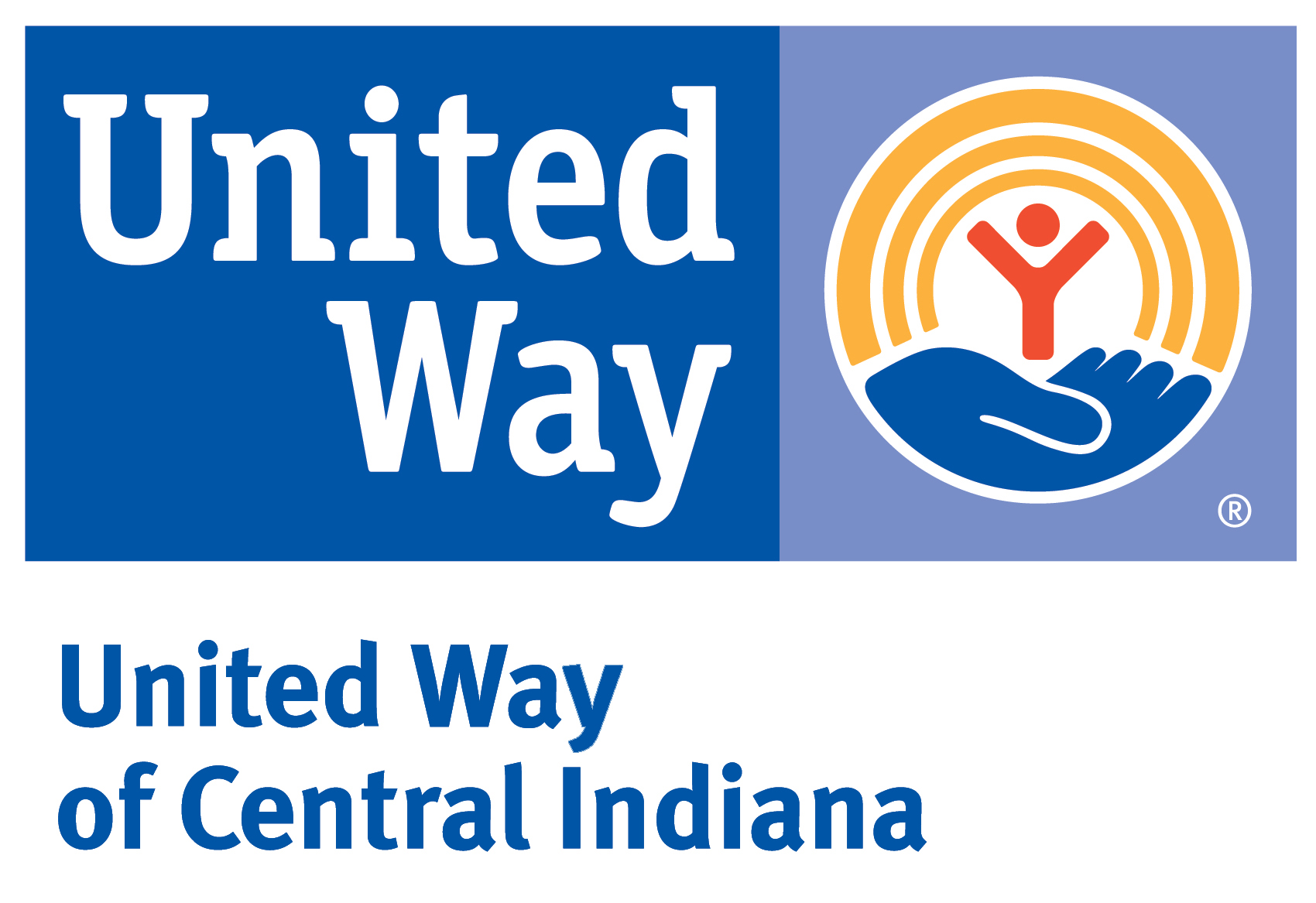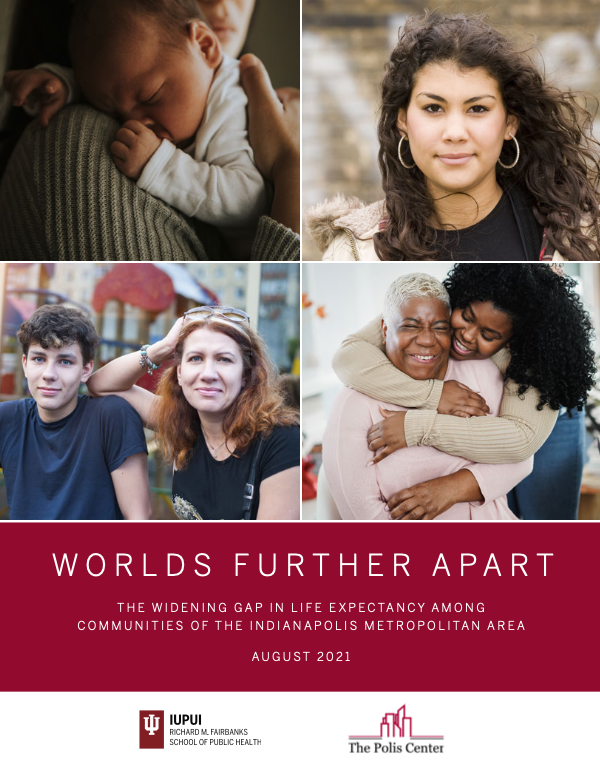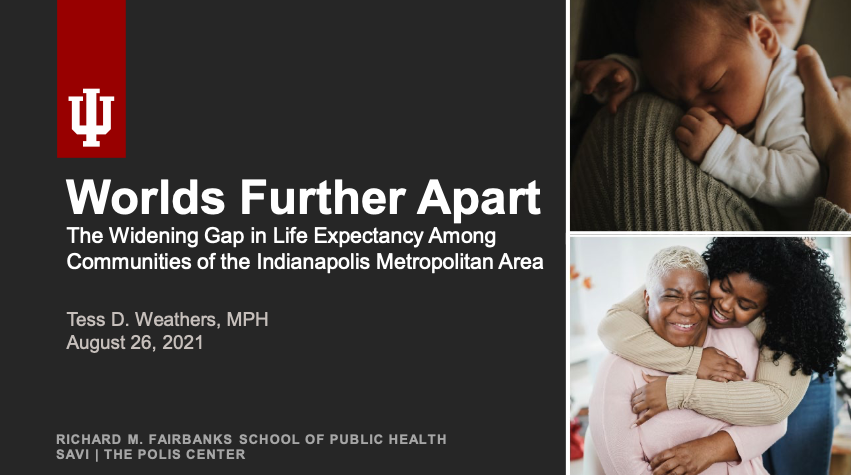Worlds Apart
An Update on Gaps in Life Expectancy in Central IndianaSAVI Talks – August 26, 2021
In 2015, the IU Fairbanks School of Public Health (FSPH) and The Polis Center published an issue brief, Worlds Apart: Gaps in Life Expectancy in the Indianapolis Metro Area, that brought to light a 14+ year gap in life expectancy between the longest and shortest living communities in Central Indiana. Because of the significant interest and community discussion that the report generated, we have collaborated to update our analysis. We will see which communities gained or lost life expectancy over a 10-year span (prior to COVID-19), and we’ll compare life expectancy at different ages across the life course to see how patterns differ.
In this August 26 SAVI Talks event, we will also share key findings from our deep dive with SAVI data examining underlying social factors and life expectancy in Central Indiana communities. Join us to be informed and help spur community action–because everyone deserves the opportunity for a long and healthy life.
Other partners include The Polis Center, SAVI, WFYI, and the Central Indiana Senior Fund, a fund of the Central Indiana Community Foundation, Inc

Articles and Story Maps
Explore other research and interactive content we have developed around equity.
Indiana Geographic Information Council’s (IGIC) Special Achievement in GIS Award
The Polis Center won the Indiana Geographic Information Council’s (IGIC) Special Achievement in GIS Award for the SAVI Coronavirus Data Hub. IGIC President Kari Hicks says, “Given the impact of COVID-19, using GIS to create a dashboard to help inform...
Health and Economic Impact of COVID-19 on Neighborhoods
In this report, we identify the areas in Indianapolis most affected by COVID-19, particularly those already disproportionately affected by poverty; define some of the challenges families in these areas are facing; and explore ways inequity plays a role in the risk,...
Indy Evictions May Reach 34,000 or More in 2020
An increase in unemployment claims could drive the eviction rate from 7 percent in 2016 to 20 percent in 2020, and informal evictions may be twice that.
Police Used Force on 1.3 Percent of Black Residents Since 2015
Police used force over 1,600 times in 2019. Officers use force on black residents at a rate 2.6 times higher than white residents.
Socioeconomic factors explain why some New York ZIP codes were hit hardest by COVID-19
By comparing New York’s COVID-19 test results with demographic and socioeconomic factors by ZIP code, we found that low education levels, crowded housing, and a lack of health insurance are some of the strongest predictors of high COVID-19 positivity rates.
The Inequalities Behind COVID-19 Disparities for African Americans in Indianapolis
COVID-19 positivity rate is 1.8 times higher for blacks than for whites. We explore how systemic inequities put many black individuals at higher risk for getting the virus, having a serious case, and suffering from the economic impacts compared to white residents.
Three Ways to Visualize COVID-19 Race and Gender Disparities
In Indiana, black individuals are 2.4 times more likely to test positive than whites. We look at three different ways to visualize COVID-19 disparities like this.
How long does it take to get to a grocery in each neighborhood?
This past November, we released the report Getting Groceries: Food Access Across Groups, Neighborhoods, and Time. Expanding on this report, we created an interactive map to display food access information for each block group in Marion County. Click on a block group...
Getting Groceries
When people do not have access to healthy food, this can impact their diet, their health, and their quality of life. Food deserts are a way of defining communities that lack healthy food access. These are neighborhoods with both low healthy food access and low income....
After Expansion, Pacers Bikershare Offers Access to 34 Miles of Bike Trails
With the addition of 29 new bikeshare stations, Pacers Bikeshare now makes trips possible on one third of Indy’s bike trail system.
Authors
Tess Weathers
IU Richard M. Fairbanks School of Public Health
Karen Comer
The Polis Center
Jay Colbert
The Polis Center
Matt Nowlin
The Polis Center
Jeramy Townsley
The Polis Center
Event Partners





SAVI Talks Presenters
Tess Weathers
IU Richard M. Fairbanks School of Public Health
Matt Nowlin
Data Analyst
Polis Center
SAVI Talks Panelists
Ashley Gurvitz
Exec. Director & CEO
Alliance for Northeast Unification
Sabae Martin
Butler Tarkington Neighborhood ASsaoc. Board Member
Ron Rice
DIP-IN Commnity Health Worker
Flanner House
LaShauna Triplett
School Director
Mackide Lovveal & Trip Outreach Center
Moderator
Farah Yousry
Health Equity Repoirter
WFYI Public Media


